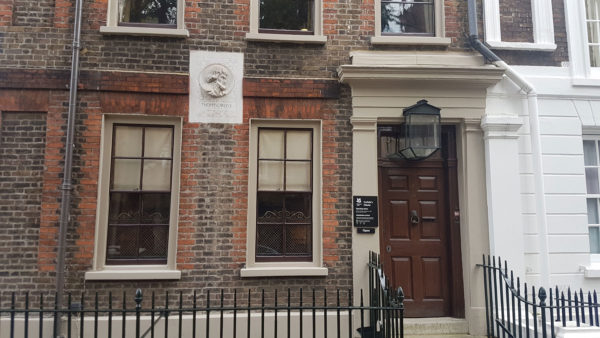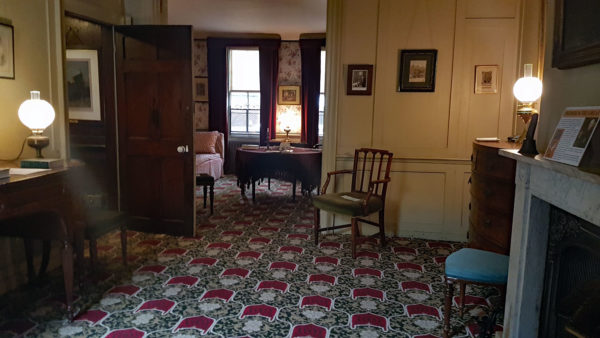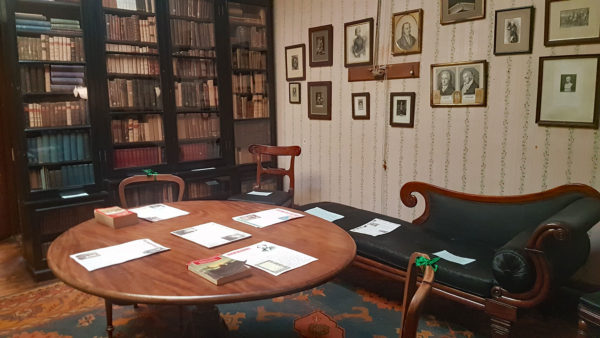In a side street in posh Chelsea can be found a nice but otherwise ordinary house, but to step inside is to step into a Victorian time capsule. This is the home of Thomas and Jane Carlyle, both noted writers, but this is the patriarchy, so the house is devoted to the man, with the wife in a prominent, but an unquestionably secondary place.
Visiting homes devoted to the memory of a person can be a bit risky. If you’re a huge fan of the person, then it is to step within the hallowed ground, to be within the presence of their greatness and a visit is usually wonderful. If you’re not a huge fan, then, well, it’s a building.
Fortunately, Thomas Caryle’s House appeals to both for it is absolutely a memorial to the Man (and wife), but it’s also a fascinating building to visit, as it’s been largely presented as it would have been during their lifetime.
A visit is to wander around the rooms, from the basement kitchen to converted attic — except the second floor, which is now home to the building’s custodian, who has probably one of the best located grace-and-favour apartments around.
All around are sheets with snippets about the man, the writing, and much more interestingly, family life in this home, bought at a time when the area was far more run-down than the poshness it exudes today.
Thomas Caryle is one of those Victorian characters who didn’t seem to do much, but what he did was exceptionally important, and he moved in the highest of circles as a result. So unlike, say the Dickens museum, where there’s copious to talk about, Thomas Caryle’s writings were, as the museum admits, not that readable.
In a recent book about his life, Simon Heffer wrote that Carlyle’s book are often unread, because in large parts they are unreadable.
Fortunately, the wife, also a noted literary person was able to write in a much more agreeable manner.
To visit then really is to step into a Victorian home of a modestly well to do family. One, occasionally two servants down below, and middle-class decency upstairs.
What is curious about the building is the attic, which was converted into a study for Thomas to work in peace, and that conversion is a sign that the man was more interesting than first appears. He had the room effectively sound-proofed so he could concentrate, and by the window, you can see the air-chamber that was used to create the double-skin walls. A clever mechanism controlled a roof window to let in just the correct amount of light into the room.
It’s an interesting building to visit, made more so by the many notes from the wife’s journal, especially downstairs where she despairs of living with servants, but the man, while a force within the building when alive, now feels more of an after echo — something that was once here and now fading away.
The wife remains, in the house named after her husband.
I visited a few weeks ago, but as I write this, I now learn that the House is closed for winter, so pop a note in your diary to visit next year. I can’t say it’s an amazing place to visit, but worthy of a visit, if only to tick it off the list of places that should be visited.











That’ll give me time to wade through his French Revolution again. Again. And maybe finish it this time. J’espere.